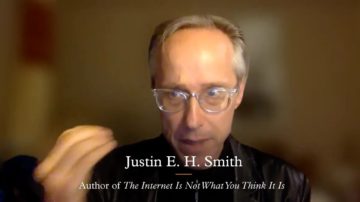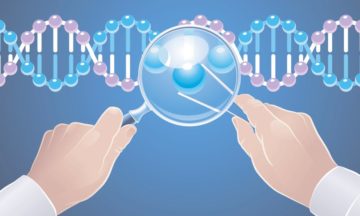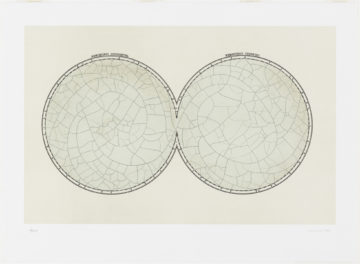Spring in Franzensfeste, South Tyrol, three days ago.
Month: April 2022
Post-pandemic Predictions
by Carol A Westbrook

I pulled my mask up, making sure to cover my nose and mouth as we walked into the supermarket.
My husband looked at me quizzically.
“Why are you putting on your mask?”
I pulled off my mask and gave him a sheepish grin.
I forgot that the mask mandate had been lifted because the Covid-19 case rate is now so low that the chance of infection was almost negligible. But I know that this is temporary, as we will probably have another spike in the fall with the emergence of yet another Omicron variant. But for now we have a temporary reprieve, and we could get back to “normal.” But what is normal? Two years under the threat of Covid-19 has changed the way we do things. The post-pandemic normal will be different than it was before Covid, and here is how I think things will look.
We have changed the way we shop. For me, and for many other people, this is the first time I’ve actually shopped for groceries in person instead of ordering online. As I walked in, the store felt like a wonderland, so full of good things to buy that I couldn’t make up my mind. Yes, they even had toilet paper! Every brand and any size! (Remember the first few weeks of the lockdown, when one of our biggest fears was to be caught with our pants down, with nothing to wipe our rear ends?) Still, some products were in short supply, with their empty spots glaringly obvious, like a mouth with a missing tooth. Supply chain problems, they said. Read more »
Poem
At My Mother’s Grave in the Putnam Valley —
7000 Miles from Where She Was Born
Mother, I thought I heard an echo
of your rousing words —
“My Life Is Ahead of Me”—
Wrinkles mapped your face
after you flew
from the Kashmir Valley where—
long as I remember—
you raged for a life of dignity —
again losing your mind . . .
Seventy-three is the same age you were
when you spoke those words, yet
mapping my life ahead, I wonder
how stirring now must be
your echo across eternity!
Maryam Kathwari, March 5, 1924 ‑— March 31, 2020
Charaiveti: Journey From India To The Two Cambridges And Berkeley And Beyond, Part 39
by Pranab Bardhan
All of the articles in this series can be found here.
 In the Berkeley hills there is a campus bus but the nearest bus stop is about a one-mile walk from my home, if you take a short cut through a meadow, but it gets quite muddy in the rainy season. Still, after some years I opted for taking the campus bus rather than my car on weekdays. One regular passenger I used to meet in the bus was a distinguished nonagenarian, Charles Townes, who had won the 1964 Physics Nobel Prize for inventing the laser (later he was also involved in the team that discovered the black hole at the center of the Milky Way galaxy). In a campus lecture that I once gave on Globalization I was thrilled to see him at the front in the audience. He was active in the campus even in his 100th year, shortly before his death.
In the Berkeley hills there is a campus bus but the nearest bus stop is about a one-mile walk from my home, if you take a short cut through a meadow, but it gets quite muddy in the rainy season. Still, after some years I opted for taking the campus bus rather than my car on weekdays. One regular passenger I used to meet in the bus was a distinguished nonagenarian, Charles Townes, who had won the 1964 Physics Nobel Prize for inventing the laser (later he was also involved in the team that discovered the black hole at the center of the Milky Way galaxy). In a campus lecture that I once gave on Globalization I was thrilled to see him at the front in the audience. He was active in the campus even in his 100th year, shortly before his death.
I also came to know that he was a deeply religious man. He claimed that his invention of the laser came to him like a ‘flash’ akin to religious revelation. When he got the 2005 Templeton Prize that celebrates scientific and spiritual curiosity, he said that “Science and Religion are quite parallel…..Science tries to understand what our universe is like and how it works, including us humans. Religion is aimed at understanding the purpose and meaning of our universe, including our own lives”. This reminded me of what Tagore said to Einstein on the relation between Science and Religion when they met at the latter’s home in Berlin in 1930: “Science… is the impersonal human world of Truths. Religion realizes these Truths and links them up with our deeper needs; our individual consciousness of Truth gains universal significance. Religion applies values to Truth.” Einstein did not fully agree with Tagore, nor do I with either Townes or Tagore. But no one can deny that in interpreting facts scientists cannot be independent of values (this is an important issue in some debates in life sciences now), and I also understand a bit about the possible appeal of deep spirituality even for atheists. Read more »
Simulation, Gamification, and the Rise of Algorithmic Capitalism
Justin E. H. Smith in his Substack newsletter, The Hinternet:
 I have been doing a great deal of publicity these past weeks for my new book, The Internet Is Not What You Think It Is. I have been compelled to train my speaking voice, to craft short-and-sweet sound-bites, and even to worry about such externalities as my physical appearance when I am asked to make promotional videos or to appear on podcasts that transmit not only a trace of my voice, but an animate likeness of my very person, across the world wide web.
I have been doing a great deal of publicity these past weeks for my new book, The Internet Is Not What You Think It Is. I have been compelled to train my speaking voice, to craft short-and-sweet sound-bites, and even to worry about such externalities as my physical appearance when I am asked to make promotional videos or to appear on podcasts that transmit not only a trace of my voice, but an animate likeness of my very person, across the world wide web.
I have been saying “yes”, to virtually every podcast and radio invitation I’ve received. Sometimes I find myself doing some rather quick mental work, after clicking the Zoom link, to recall who exactly it is I’m talking to, and what is expected of me. Sometimes there’s a tell-tale hint —an Australian accent, say— that brings me back to the e-mail I received a week or so prior and that reminds me of the host’s general orientation and expectations. Sometimes I fly blind through the whole thing, still uncertain at the end whose show I’ve just graced with my presence.
More here.
We Are Wasting Time on These Climate Debates, The Next Steps are Clear
John Bistline, Inês Azevedo, Chris Bataille and Steven Davis in the New York Times:
 The Intergovernmental Panel on Climate Change report, which was released last week and which we co-authored with many colleagues, offers hope for limiting global warming.
The Intergovernmental Panel on Climate Change report, which was released last week and which we co-authored with many colleagues, offers hope for limiting global warming.
But there is no time to waste. And wasted time includes time spent debating issues that divert us from our most important priorities right now.
Unfortunately, debates about distant future decisions and future uncertainties are distracting advocates, policymakers, researchers and the public from their shared, near-term goals. At best, these disputes give observers — especially policymakers and their advisers, who are trying to make tough short-term decisions during a global energy security crisis — a misleading impression that experts disagree about effective steps to decarbonize energy systems. At worst, these disputes can stall progress by delaying policies and incentives that would accelerate clean energy deployment.
More here.
Jeff Hawkins & Subutai Ahmad: A Thousand Brains, A New Theory of Intelligence
Is this how your brain works?
Bill Gates in his blog:
 Over the years, I’ve read quite a few books about the brain, most of them written by academic neuroscientists who view it through the lens of sophisticated lab experiments. Recently, I picked up a brain book that’s much more theoretical. It’s called A Thousand Brains: A New Theory of Intelligence, by a tech entrepreneur named Jeff Hawkins.
Over the years, I’ve read quite a few books about the brain, most of them written by academic neuroscientists who view it through the lens of sophisticated lab experiments. Recently, I picked up a brain book that’s much more theoretical. It’s called A Thousand Brains: A New Theory of Intelligence, by a tech entrepreneur named Jeff Hawkins.
I got to know Hawkins in the 1990s, when he was one of the pioneers of mobile computing and co-inventor of the PalmPilot. After his tech career, he decided to work with a singular focus on just one problem: making big improvements in machine learning. His platform for doing that is a Silicon Valley–based company called Numenta, which he founded in 2005.
More here.
Joseph Kalichstein (1946 – 2022) Pianist
Roland White (1938 – 2022) Bluegrass Musician And Mandolin Player
Mira Calix (1969 – 2022) Experimental Musician And Artist
Sunday Poem
Mankind is at least 90% slumber. The rest is history.
……………………………………………..—Roshi Bob
The Inferno -excerpt
—Canto 1
Midway upon the journey of our life
….. I found myself within a forest dark,
….. For the straightforward pathway had been lost.
Ah me! How hard a thing it is to say
….. What was this forest savage, rough, and stern,
….. Which in the very thought renews the fear.
So bitter it is, death is little more;
….. But of the good to treat, which there I found,
….. Speak will I of the other things I saw there.
I cannot well repeat how there I entered,
….. So full was I of slumber at the moment
….. In which I had abandoned the true way.
Dante Alighieri
from The Inferno
Barnes & Noble Classics, 2003
Translation: Henry Wadsworth Longfellow
The Age of the Strongman – democracy muscled out?
Misha Glenny in The Guardian:
 Russia’s invasion of Ukraine has triggered a long-term shift in the tectonic plates of history that even three months ago appeared extremely unlikely. We are only six weeks in but even now, it is clear this one event will have multiple consequences around the world for many years to come.
Russia’s invasion of Ukraine has triggered a long-term shift in the tectonic plates of history that even three months ago appeared extremely unlikely. We are only six weeks in but even now, it is clear this one event will have multiple consequences around the world for many years to come.
Books on current affairs and recent history always run the risk of being overtaken by events. The revolutions in eastern Europe upended many papers and books on policy, which were still confidently assuming that the Soviet Union, the German Democratic Republic or Yugoslavia would still be functioning states well into the millennium. (Even the CIA, as late as spring 1988, was predicting that no great upheaval in eastern Europe was likely in the coming years.) Such developments have consigned many a tome to the charity bookshops prematurely.
More here.
Can Cancer Be Treated by Changing Its Cells?
Lina Zeldovich in Nautilus:
 In 2017, Karen Kostroff, a renowned oncology surgeon at Northwell Health in the New York Metropolitan area added a new talking point to her standard conversation with breast cancer patients facing tumor removal surgery. These conversations are never easy, because a cancer diagnosis is devastating news. But the new topic seemed to give her patients a sense of purpose, a feeling that their medical misfortune had the potential to do something good for other people. Kostroff was asking her patients if they would donate their tumors to science. Researchers were studying the malignant cells, hoping one day to disarm them and stop them from spreading. “You could see that there was a twinkle in their eye,” Kostroff says. “It gives them hope that even if the currently available treatments may not always cure them, this may help them or others in the future, maybe their children or relatives.”
In 2017, Karen Kostroff, a renowned oncology surgeon at Northwell Health in the New York Metropolitan area added a new talking point to her standard conversation with breast cancer patients facing tumor removal surgery. These conversations are never easy, because a cancer diagnosis is devastating news. But the new topic seemed to give her patients a sense of purpose, a feeling that their medical misfortune had the potential to do something good for other people. Kostroff was asking her patients if they would donate their tumors to science. Researchers were studying the malignant cells, hoping one day to disarm them and stop them from spreading. “You could see that there was a twinkle in their eye,” Kostroff says. “It gives them hope that even if the currently available treatments may not always cure them, this may help them or others in the future, maybe their children or relatives.”
Most cancer patients don’t die from their so-called primary tumor—the spot where it first develops. Once detected, surgeons cut it out or administer therapies to kill it—such as chemotherapy, radiation, or immunotherapy. But cancer cells have an uncanny ability to travel. They slip through blood vessels’ walls and catch a ride in the bloodstream to new places. Breast cancer’s favorite destinations are the liver, lungs, bones, and brain, Kostroff says. Once there, they begin multiplying and become nearly impossible to extinguish.
More here.
War at the end of history
Adam Tooze over at Chartbook:
War and history are intertwined. Entire conceptions of history are defined by what status one accords to war in one’s theory of change. War is certainly not the only way to punctuate history, but it is clearly one of the pacemakers. Battles and campaigns are not the only events that define winners and losers, but they do matter. In its heyday war was the great engine of history.
One of humanity’s recurring hopes has been that through history we might escape war. Since World War II Western Europe in particular has been invested in the idea of consigning war to the past. That is a hope that is based not just on a humanitarian impulse, but also on the sense that the basic questions of international politics were resolved and that for the settlement of whatever remained, the modern instruments of war – most notably nuclear weapons – were likely counterproductive. The era of military history was thus consigned to an earlier developmental phase.
If it was once sensible to think of war as the extension of policy by other means, historical development had closed that chapter. Both the main questions of policy and the repertoire of sensible policy tools have changed. With the passing of that epoch, war belonged to the past. Skepticism about war was not, first and foremost, a matter of moral values, it was a matter of realism, of understanding what actually made the modern world tick.
More here.
What the Fossil Fuel Industry Learned from Anti-BDS Laws
 Alex Kane in Jewish Currents:
Alex Kane in Jewish Currents:
IN LATE 2019, Jason Isaac, an energy policy staffer at the Texas Public Policy Foundation, a conservative think tank, began hearing of a new threat to fossil fuel companies. Pressure from climate activists had led some banks, pension funds, and universities to announce that they were divesting from oil, gas, and coal. As a result, executives of companies in Texas told Isaac that they were struggling to access capital as some investors backed away from their sector out of what Isaac—whose think tank program advocates for the continued use of fossil fuels and receives some of its funding from energy companies—called a desire to “appease a woke ideological political base.”
But Isaac had an idea. In late 2016, as a Republican member of the Texas state legislature, he co-authored legislation that banned the state from doing business with companies or individual contractors who withheld their investments or services from the State of Israel. The legislation, later signed into law by Gov. Greg Abbott, is meant to combat the Boycott, Divestment, and Sanctions (BDS) movement for Palestinian rights, which calls for boycotts of Israeli products, divestment from corporations that do business in Israel, and sanctions on the state.
Isaac realized he could apply a similar logic to those who might seek to hobble the energy industry.
More here.
Cowboy progressives
 Daniel J Herman in Aeon:
Daniel J Herman in Aeon:
In her recent book How the South Won the Civil War: Oligarchy, Democracy, and the Continuing Fight for the Soul of America (2020) – currently, Amazon’s top seller in the political history category – the historian Heather Cox Richardson expands and modifies Brown’s observation, arguing that Goldwater’s ‘Movement Conservatism’ – meaning vehement opposition to civil rights bills, communism, labour unions and social spending – solidified a neo-Confederate alliance between West and South that permanently transformed the Republican Party.
In Richardson’s telling, the Reagan/Goldwater cowboy persona evolved out of literary myths manufactured in the late 19th century specifically to counter Reconstruction era racial reforms, myths that 20th-century reactionaries used in their battle against civil rights. The anti-civil rights, anti-government alliance between South and West that began in the late 19th century, she argues, continued with early 20th-century opposition to anti-lynching bills before spawning Movement Conservatism in the 1960s.
What I’d like to offer here is a counter-history. To the degree that progressives formed successful constituencies in the 20th century – in economic, gender, racial and even foreign policy matters – the West was key.
More here.
Philosophy and Reparations
 Over at Phenomenal World, Lily Hu interviews Olúfẹ́mi Táíwò on climate crisis, reparations, and the use of history:
Over at Phenomenal World, Lily Hu interviews Olúfẹ́mi Táíwò on climate crisis, reparations, and the use of history:
LILY HU: …My first question is: do you see your lack of focus on questions that have been deemed important in philosophy as a case of refusing that “distraction” referenced by Morrison? How do you see your work on reparations as a philosopher, walking the line between contributing to an existing philosophical discourse on reparations but also setting it on a fresh course?
OLÚFẸ́MI TÁÍWÒ: I’m less concerned about which questions to focus on, even though in principle I’m willing to make a point about the priority of different kinds of questions. For example, I engage with discussions in the philosophical literature about the so-called non-identity problem, which calls into question whether it makes sense to make reparations to the present-day victims of great historic injustices, who, it is argued, owe their existence to those unjust institutions. The non-identity problem asks: if so many populations would not themselves exist had it not been for these processes of great injustice, can we really say they’ve been made “worse-off” by them? It’s a jarring question, but it has been taken as a substantial hurdle in philosophical debate about reparations and climate justice. I also think there’s a distributional factor around whose questions we take up.
More here.
‘Letters to Gwen John’ by Celia Paul
Rachel Cooke at The Guardian:
 As its title somewhat suggests, the artist Celia Paul’s second book takes the form of a series of letters to Gwen John, whose life, she believes, was “stamped with a similar pattern” to her own, and a postcard of whose painting The Convalescent she keeps in her studio (just one look at it, she says, and her breathing becomes easier). But this description is also – happily, I think – misleading. As anyone who has ever written a love letter will know, such notes inevitably say more about correspondent than recipient. If love is, as Paul suggests, the highest form of attention, it’s also a mirror: a means, marvellous and occasionally highly dangerous, of seeing ourselves anew.
As its title somewhat suggests, the artist Celia Paul’s second book takes the form of a series of letters to Gwen John, whose life, she believes, was “stamped with a similar pattern” to her own, and a postcard of whose painting The Convalescent she keeps in her studio (just one look at it, she says, and her breathing becomes easier). But this description is also – happily, I think – misleading. As anyone who has ever written a love letter will know, such notes inevitably say more about correspondent than recipient. If love is, as Paul suggests, the highest form of attention, it’s also a mirror: a means, marvellous and occasionally highly dangerous, of seeing ourselves anew.
I don’t mean at all to suggest that Paul is in love with John. But these are intimate letters, their author seemingly having taken to heart Colette’s writing advice (look at what gives you pleasure, but look longest at what gives you pain), and it’s this that enables me to forgive, if not quite to overlook, the rather fey idea of a one-sided conversation with a woman who died in 1939.
more here.
Augustus & Gwen John – The Fire and the Fountain

